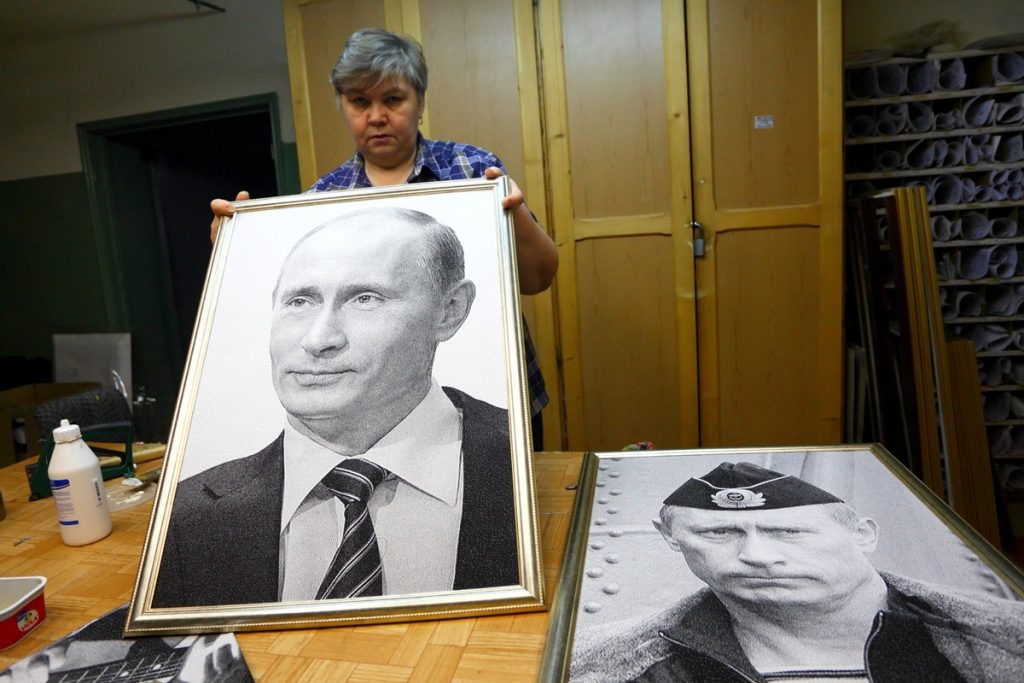The Weaponization of Social Media: How Russia Co-opted Public Institutions for War Propaganda
The digital battleground of social media has become a key theater in Russia’s ongoing war against Ukraine. Since the full-scale invasion in 2022, the Kremlin has systematically leveraged social media platforms, particularly VKontakte (Russia’s equivalent of Facebook), to disseminate pro-military and pro-state propaganda. This campaign extends beyond mere online rhetoric, reaching deep into the fabric of Russian society by co-opting public institutions, from schools and kindergartens to hospitals and museums, transforming them into unwilling conduits of state-sanctioned narratives.
This orchestrated propaganda push is driven by a top-down system originating from the Regional Management Centers (RMCs), entities ostensibly designed to facilitate online communication between citizens and government officials. In reality, these RMCs serve as central hubs for generating and distributing pro-war content, effectively turning public sector workers into de facto propagandists. This mandate has created a moral dilemma for many employees who find themselves torn between their professional obligations and personal convictions.
The experiences of several individuals working within these institutions paint a vivid picture of the pervasive nature of this propaganda machine. Natalia, a former employee of a social welfare institution in Petrozavodsk, describes the surreal experience of being tasked with managing the organization’s social media presence despite lacking any prior experience or clear understanding of the institution’s purpose. She recounts how the once-stagnant VKontakte page became inundated with “news from above,” consisting of generic war videos and glorifications of Russian soldiers, content she and her colleagues cynically referred to as “shit-news.”
The legal framework for this digital mobilization was laid in December 2022, when amendments to federal legislation mandated all government bodies and affiliated organizations to maintain active social media presences on platforms like VKontakte and Odnoklassniki. Andrey Tsepelev, deputy director general of Dialog Regions (the organization overseeing the RMCs), hailed this initiative as a groundbreaking system of government transparency, while simultaneously characterizing social media pages as “firing positions” in the “informational hybrid war” against Russia. This duality speaks volumes about the Kremlin’s strategic approach to information control.
The implementation of these regulations has been met with varying degrees of compliance and resistance. While some institutions, like Natalia’s, dutifully disseminated the prescribed content, others adopted more nuanced approaches. Evgeniya, a public relations officer at a state-run theater in the Kirov region, describes how her institution tried to minimize the visibility of patriotic posts by burying them under theater-related content. Inna, who manages the social media for a state-run youth center in Novosibirsk, reveals how she and her colleagues feigned compliance by submitting fabricated reports about screenings of mandatory war documentaries, while privately expressing their disapproval.
This enforced participation in the propaganda machine has placed a significant burden on public sector workers, many of whom are now expected to perform these additional duties without commensurate compensation. The lack of dedicated social media management positions has resulted in existing staff shouldering the responsibility, leading to widespread complaints about unpaid labor and inadequate training. This resentment is evident in comments on a Telegram channel run by Dialog Regions, where employees express their frustration with the added workload and the lack of financial recognition.
Beyond the logistical challenges, the moral implications of disseminating pro-war propaganda weigh heavily on many employees. Natalia describes the shame she felt posting content she found morally objectionable, recognizing the potential impact on followers who, over time, may internalize the state-sanctioned narrative. This internal conflict is echoed by Inna, who expresses her struggle to reconcile her professional obligations with her personal anti-war stance.
The pervasiveness of this propaganda campaign extends beyond individual institutions, permeating the very fabric of social interactions. Discussions about the war are often avoided, shrouded in a veil of silence and unspoken understanding. Evgeniya notes the unspoken agreement among her colleagues to “turn a blind eye” to the mandated posts, while Olga from Buryatia recounts her director’s fear of being inundated with obituaries of fallen soldiers. These anecdotes reveal a society grappling with the complexities of navigating a heavily controlled information landscape, where dissent is often met with silence or subtle forms of resistance.


